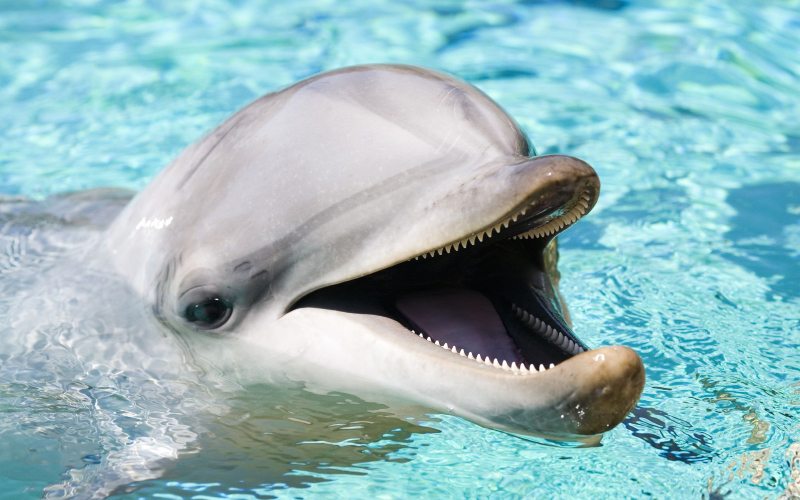Dolphins
Episode #6 of the course “The Smartest Animals on Earth“
Dolphins’ brains are only slightly larger than humans’, but their capacity for intelligence exceeds humans in several ways. When a dolphin is born, its brain is already half the size of an adult human’s, and it grows almost twice as quickly as a human child’s brain. Dolphins are communicative, problem-solving learning machines of the ocean.
They have a great capacity for memory and have been shown to exhibit emotional responses toward fellow dolphins and other creatures. Highly social animals, dolphins will protect one another as well as mourn the loss of one of their pod members.
Sailors, coastal people, and scientific researchers have known for decades that dolphins are talkative, communicating through a series of clicks, whistles, and calls, but it was recently discovered that dolphins identify each other by specific sounds—similar to how humans call each other by name. Their high-pitched signals for one another can be heard over miles of ocean space, and a dolphin’s brain is highly developed to remember the caller, then locate him or her.
Dolphins have a capacity for learning and problem-solving that is similar to a human’s, and the animal will become bored without opportunities to learn. Dolphin intelligence is rarely studied in controlled experiments in the wild, but dolphins in captivity display a need for new toys, tricks, environments, and puzzle-solving games in order to maintain their activity level and interest.
Without new opportunities to learn, play, and socially interact with other dolphins, some captive dolphins begin to exhibit negative behaviors in much the same way as a human child under the same conditions. Wild dolphins use tools and social cooperation to find food and will often make a game out of the hunt.
Share with friends

